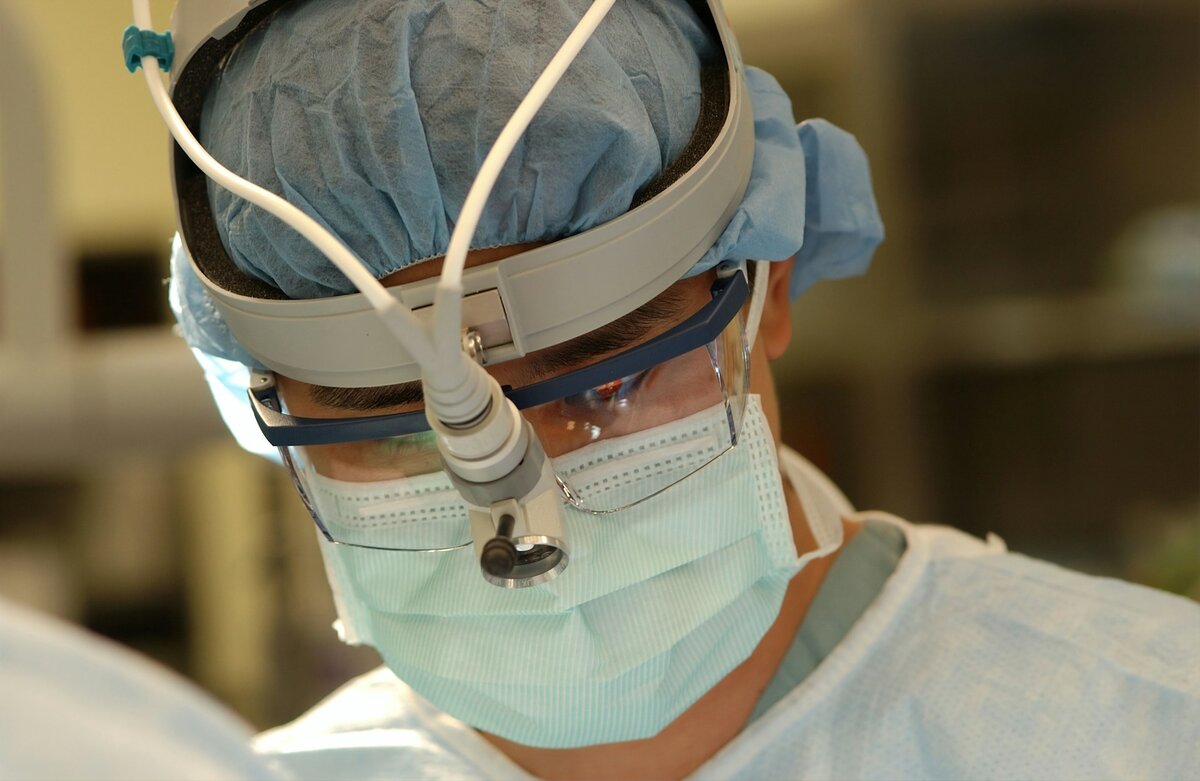The internal bra technique is a cutting-edge approach to breast surgery, offering support from within. Instead of external garments, this method uses surgical mesh or a similar material to create a sort of internal scaffolding. This aims to enhance the breast’s shape and lift, holding tissues in place much like a traditional bra would, but from the inside. While it sounds promising, understanding the procedure’s intricacies is crucial, especially for those considering its long-term implications on their body and overall health.
On this page:
Comparing Internal Bra with Traditional Breast Procedures
Traditional procedures like breast lifts or augmentations usually involve adding implants or repositioning the breast tissue to achieve the desired look. However, these methods don’t always prevent breasts from sagging again in the future.
The internal bra, on the other hand, uses a mesh-like material or a system of sutures to create an internal support structure. This technique acts like an internal mesh bra under the skin, holding the breast tissue up, potentially leading to internal mesh bra side effects. It’s like having a permanent lift without the visible bra lines. This technique can be particularly helpful for those who have lost a lot of weight or have had pregnancy-related changes and want a more lasting solution.
One of the big pluses of the internal bra system is that it aims to provide long-term results. Traditional procedures might need touch-ups or revisions as time goes on and gravity continues to do its work. But with an internal bra, the support is built right in, meaning the effects could last longer without the need for additional surgeries.
While traditional breast surgeries often focus on size and shape, the internal bra method adds another layer by focusing on internal support. This doesn’t mean you can’t combine the internal bra with other procedures to get the size and shape you want; it just means you’re also getting a boost in support to help maintain those results.
When thinking about scarring, the internal bra might edge out some traditional methods. Since it’s all happening internally, the incisions can be smaller and more discreet. Traditional breast procedures sometimes require larger incisions, which might lead to more noticeable scars.
Identifying Ideal Candidates for Internal Bra Surgery
Ideally, candidates are those who seek long-term solutions for sagging breasts without the use of external implants. Women who experience a loss of breast volume due to aging, weight fluctuations, or childbirth may find this procedure a fitting option. Additionally, candidates should be in good overall health, non-smokers, and have realistic expectations about the surgery’s outcome.
The internal bra technique is particularly appealing for those who have had previous breast surgeries but did not achieve the desired lift or support. It’s also an excellent choice for active individuals who engage in sports or physical activities, as the internal bra provides extra support that can withstand movement better than traditional breast lifts.

However, this surgery might not be suitable for everyone. Women with very large breasts may not get the support they need from the internal bra alone. In such cases, a traditional breast reduction might be recommended before considering the internal bra option. Similarly, individuals with certain health conditions that impair healing or those who cannot commit to a proper recovery period may need to explore other options.
Recovery and Galaflex Mesh Side Effects
After the procedure, it’s common to experience a mix of excitement for the results and uncertainty about the healing process. It’s important to follow your doctor’s guidance closely during this time.
Initially, you may have some swelling and discomfort, which is normal. Your surgeon will likely recommend wearing a special support bra to help manage swelling and support your breasts as they heal. This garment is crucial because it aids in maintaining the shape and position of the breast tissue and implants, if used.
Most patients take it easy for the first few days, focusing on rest and avoiding any strenuous activities that could strain the chest area. It’s essential to listen to your body and not rush the recovery process. Your surgeon will provide a timeline for when you can gradually return to your daily routines and exercise. Generally, light activities can be resumed within a few days, but heavy lifting or vigorous exercise should be avoided for a few weeks as advised by your surgeon.
It’s also important to keep all follow-up appointments with your surgeon. These visits allow your surgeon to monitor your progress and address any concerns you might have. They can also provide guidance on scar care to ensure the best possible outcome.
Understanding Internal Mesh Bra Side Effects
Common side effects can include discomfort, swelling, and bruising in the days following the surgery. These are typically temporary and manage themselves with rest and proper care. However, there are other risks that merit a closer look. Infection, although rare, is a serious concern and can require additional treatment if it occurs. Scarring is also possible, as with any surgical procedure, and the visibility of scars can vary based on individual healing processes.
A unique risk of internal bra surgery is the potential for the mesh or scaffold material used to create the internal bra to move or become noticeable through the skin. This can cause an irregular breast shape or texture changes in the breast tissue. Additionally, as the internal bra is a relatively new technique, the potential internal bra side effects and long-term durability are not as well documented as more traditional procedures.
Another consideration is the body’s reaction to the synthetic materials used to construct the internal bra. While these materials are designed to be safe and compatible with the body, there is always a possibility of an allergic reaction or rejection of the material, which could lead to further complications.
It’s essential to recognize that internal bra surgery does not halt the natural aging process or prevent changes in breast tissue due to weight fluctuations, pregnancy, or hormonal shifts. Future procedures may be necessary to maintain the desired appearance.
Patient Insights on Internal Bra Side Effects
Most patients express satisfaction with the support and shape they achieve post-surgery. They talk about feeling more confident in their clothes and how the procedure has given them a lasting lift without the need for external support like push-up bras.

On the flip side, some patients have reported challenges. For a few, the healing process was longer than expected, with some discomfort around the surgical area. Others noticed a sensation of tightness or a mild change in the sensation of their breast tissue, which generally improved over time.
A particular point that comes up is the importance of having a skilled surgeon. Patients who researched and chose experienced surgeons often report better outcomes and fewer complications. They talk about the value of open communication with their doctors, which helped set realistic expectations and understand the journey ahead.
Interestingly, a common thread among stories is the reaction to the internal bra’s longevity. Patients were pleased that the results held up over time, maintaining the lift and shape of their breasts even a few years down the line. This long-term satisfaction seems to be a significant factor in why they chose the internal bra option in the first place.
Cost Analysis of Internal Bra Surgery
This procedure is typically not covered by insurance, as it’s often seen as cosmetic rather than medically necessary. Prices can vary widely depending on the surgeon’s experience, the complexity of the surgery, and the geographic location of the practice.
On average, the cost of internal bra surgery can range between $8,000 and $15,000. This price usually includes the surgeon’s fee, anesthesia, operating room facilities, and any postoperative garments required. It’s also important to remember that this figure might not cover additional expenses like pre-surgical medical tests, follow-up appointments, and any necessary medications.
Surgeons in metropolitan areas with a high cost of living or those who are highly sought after for their expertise may charge more. Similarly, if your case requires a customized approach or additional procedures, such as a breast lift or augmentation, the cost may increase.
Some practices offer financing plans or payment options to help patients manage the expense. It’s a good idea to ask about these during your consultation. Additionally, be sure to inquire about what the cost includes, so there are no surprise fees after the surgery.
While the cost can be significant, it’s essential not to base your decision on price alone. The skill and experience of your surgeon are paramount to achieving the best results and should be a top consideration when planning your surgery. After all, the internal bra procedure is an investment in your appearance and self-confidence, and going for the cheapest option can sometimes lead to less satisfactory outcomes or the need for corrective surgery later on.
Preparing for a Consultation on Internal Bra Surgery
Before you head in, jot down any questions or concerns you have about the procedure. This could be anything from how it’s done, what you’ll feel like after, or how it might change your daily life.
A good move is to gather your medical history, including any past surgeries, allergies, or meds you’re taking. Your surgeon needs to know this stuff to plan the best care for you. Also, if you’ve had any mammograms or breast exams, bring those results along.
It helps to think about what you’re looking to achieve with the surgery. Are you aiming for a certain look or just want to feel more comfortable? This way, the surgeon gets your vision and can tell you if it’s doable.
During the chat, the surgeon will probably go over your health and check your breasts. They’ll talk about size, shape, and what you can expect. They might take some photos for your medical record too. And remember, this is your time, so don’t be shy about voicing any worries. After all, you want to feel sure about your decision.
The office might give you some paperwork to fill out before you come in. Fill it out honestly, because every bit of info can help the surgeon give you the best advice. And if they give you instructions, like not eating before the appointment, it’s important to follow them. This way, if they need to do any tests, you’re all set to go.
Addressing Common Concerns and FAQs on Internal Bra Surgery
People often ask if the procedure will leave scars. The good news is, scars are usually hidden under the breast crease, making them less noticeable. Another hot topic is the sensation in the breasts post-surgery. Some patients experience temporary changes in feeling, but this typically fades over time as the body heals.
Another question that comes up is whether the internal bra can affect breastfeeding. The procedure is designed to avoid breast tissue as much as possible, which means most women should be able to breastfeed after surgery. However, it’s crucial to discuss your plans for having children with your surgeon before the procedure.
Pain is also a concern for many. Like any surgical procedure, there will be some discomfort during recovery, but this can be managed with medication and typically lessens within a few days to a week.
Patients also wonder about the durability of the internal bra. It’s designed to be a long-lasting solution to provide support and shape, but it’s important to maintain a stable weight and follow a healthy lifestyle to preserve the results.
Some are curious if the internal bra can be combined with other procedures like breast augmentation. The answer is yes, it can be part of a combination procedure to achieve the desired aesthetic outcome. Always discuss your goals with your surgeon to understand the best approach for your needs.
What to Expect in the Long-Term After an Internal Bra Procedure
Long-term expectations after an internal bra procedure generally point towards sustained breast support and shape maintenance. However, it’s important to remember that while the internal bra offers a more permanent solution compared to traditional breast lifts, the aging process and lifestyle factors can still affect outcomes.
Over time, some patients may experience changes in breast tissue or skin quality, which could be indicative of galaflex mesh side effects, slightly altering the initial results. Regular follow-ups with your surgeon can help monitor these changes and address any concerns. It’s also vital to maintain a stable weight and follow a healthy lifestyle to support the longevity of the procedure’s benefits.
While the internal bra technique can be a game-changer for many, it’s a journey with individual experiences, and understanding what to expect in the long run is key to satisfaction with your results.
